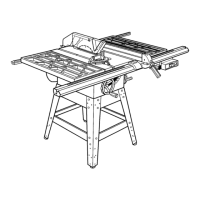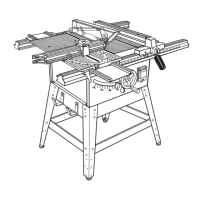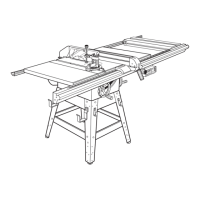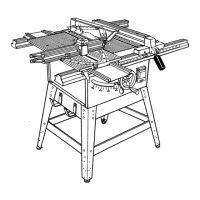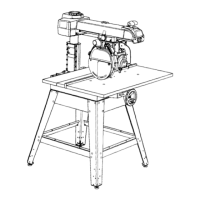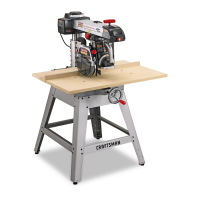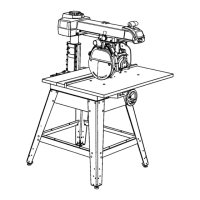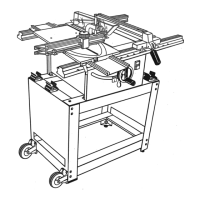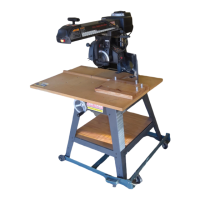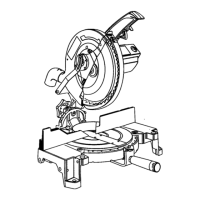
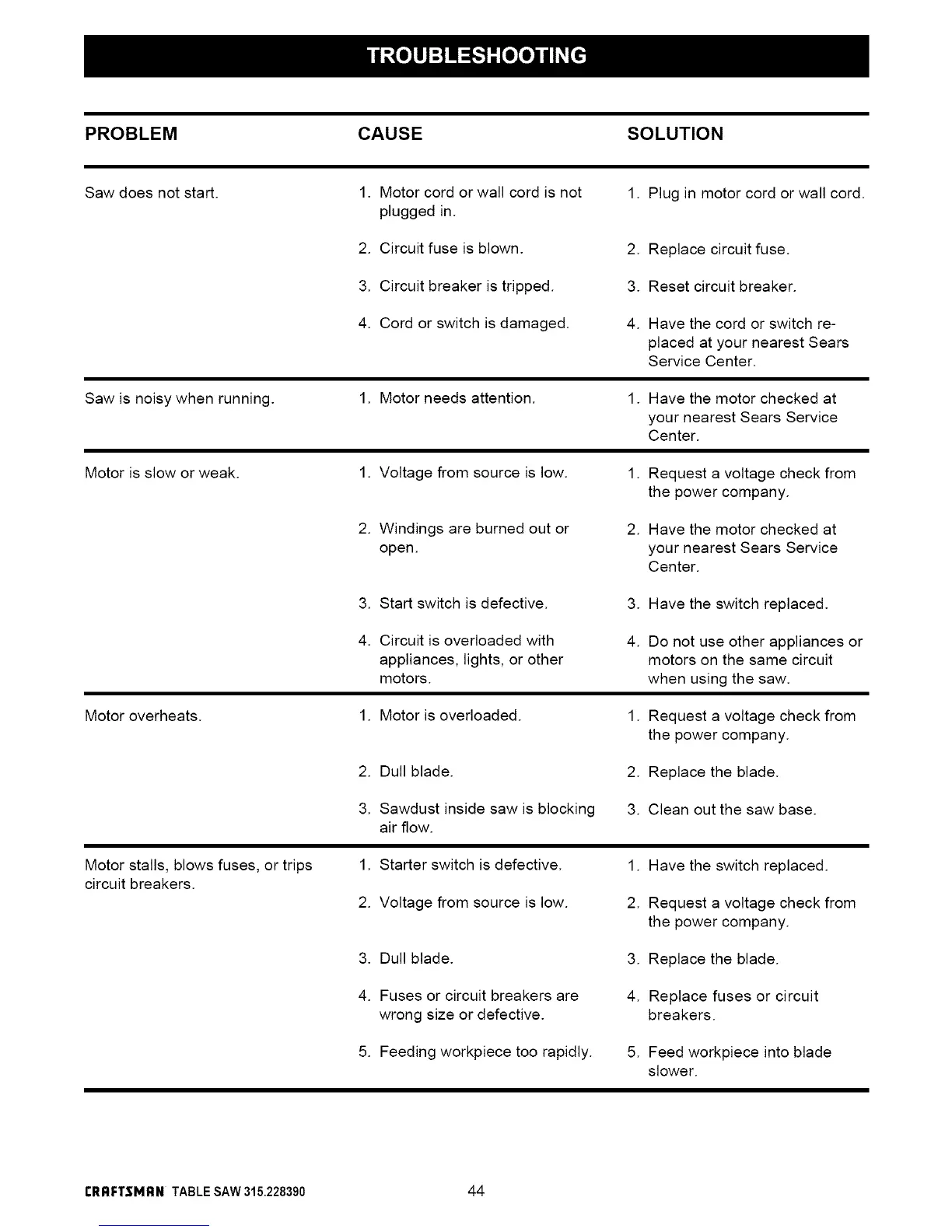 Loading...
Loading...
Do you have a question about the Craftsman 315.22839 and is the answer not in the manual?
Details the warranty coverage period and repair terms for the Craftsman table saw.
Advises users to read the manual and understand safety symbols before operating the saw.
Covers essential safety practices like reading manuals, proper work area, attire, and tool usage.
Provides guidelines for selecting and using extension cords, including wire gauge and condition.
Explains the importance of grounding and proper electrical connection procedures for safety.
Instructions for removing the saw from packaging and checking all parts.
Lists optional accessories available for purchase to enhance saw functionality.
Lists necessary tools for assembly and alignment, differentiating provided from external tools.
Identifies warning labels on the saw and their locations, emphasizing safety.
Describes the main parts and functions of the table saw, including safety and operational features.
Covers installing handwheels, assembling the leg stand, and mounting the base.
Details attaching table extensions, front/rear rails, and aligning the rip fence.
Guides on mounting the motor, installing the belt guard, blade guard, and riving knife.
Procedures for aligning the blade with miter groove and rip fence for accurate cuts.
Steps for changing the blade and ensuring it's parallel to the miter gage groove.
Instructions for setting bevel stops, adjusting the miter gage, and calibrating indicators.
Steps for removing and reinstalling the throat plate for blade access or replacement.
Explains fundamental table saw operation, kickback prevention, and using cutting aids.
Details procedures for various cuts including cross, rip, miter, bevel, and dado cuts.
Covers cleaning, checking parts, and general upkeep for the table saw.
Guidelines for maintaining the motor and electrical components, including cord safety.
Identifies key areas requiring lubrication for smooth operation and longevity.
A guide to diagnosing and resolving common issues with the table saw's operation.

